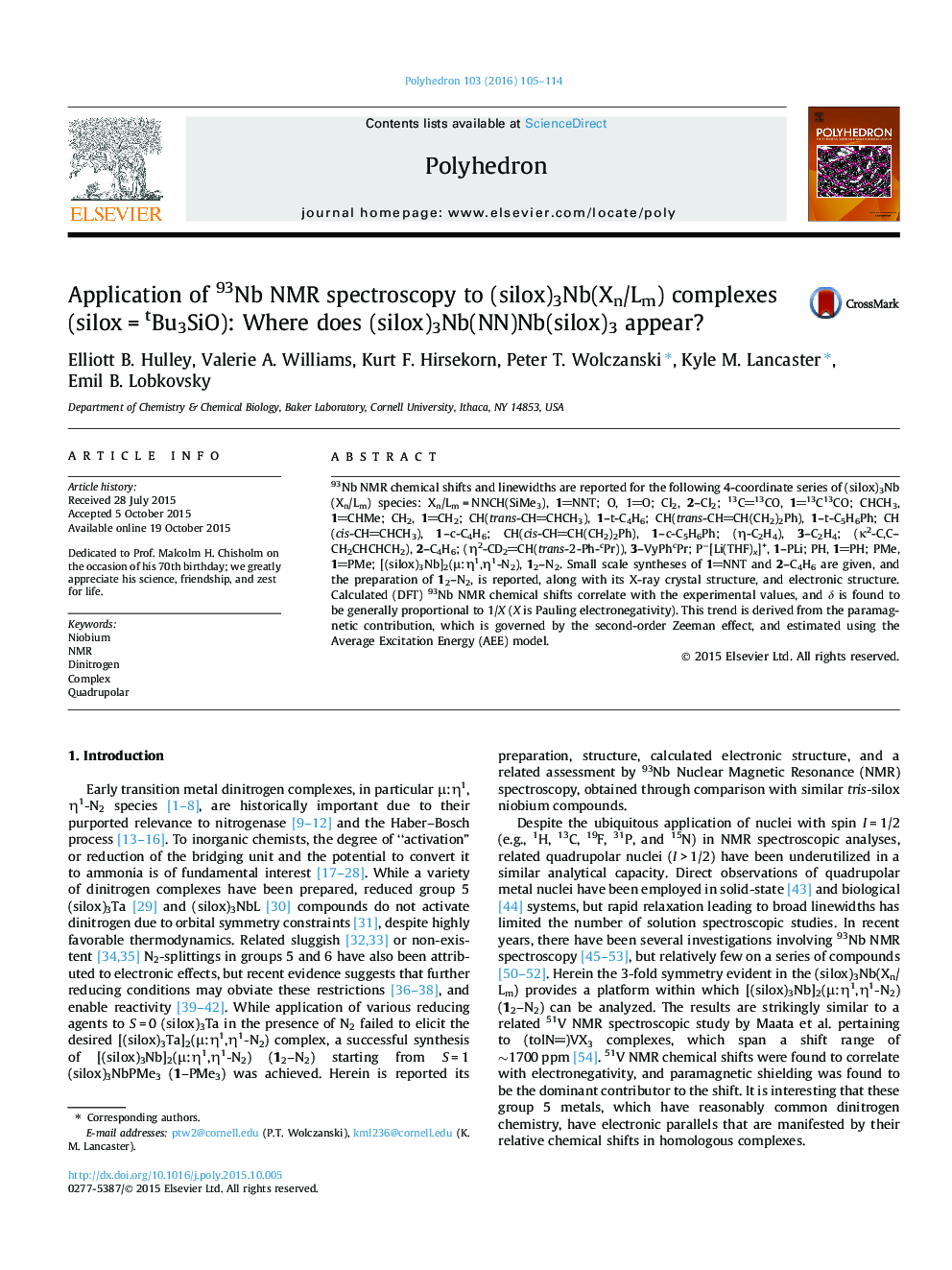| Article ID | Journal | Published Year | Pages | File Type |
|---|---|---|---|---|
| 1335846 | Polyhedron | 2016 | 10 Pages |
93Nb NMR chemical shifts and linewidths are reported for the following 4-coordinate series of (silox)3Nb(Xn/Lm) species: Xn/Lm = NNCH(SiMe3), 1NNT; O, 1O; Cl2, 2–Cl2; 13C13CO, 113C13CO; CHCH3, 1CHMe; CH2, 1CH2; CH(trans-CHCHCH3), 1–t-C4H6; CH(trans-CHCH(CH2)2Ph), 1–t-C5H6Ph; CH(cis-CHCHCH3), 1–c-C4H6; CH(cis-CHCH(CH2)2Ph), 1–c-C5H6Ph; (η-C2H4), 3–C2H4; (κ2-C,C–CH2CHCHCH2), 2–C4H6; (η2-CD2CH(trans-2-Ph-cPr)), 3–VyPhcPr; P−[Li(THF)x]+, 1–PLi; PH, 1PH; PMe, 1PMe; [(silox)3Nb]2(μ:η1,η1-N2), 12–N2. Small scale syntheses of 1NNT and 2–C4H6 are given, and the preparation of 12–N2, is reported, along with its X-ray crystal structure, and electronic structure. Calculated (DFT) 93Nb NMR chemical shifts correlate with the experimental values, and δ is found to be generally proportional to 1/X (X is Pauling electronegativity). This trend is derived from the paramagnetic contribution, which is governed by the second-order Zeeman effect, and estimated using the Average Excitation Energy (AEE) model.
Graphical abstract93Nb NMR chemical shifts of (silox)3Nb(Xn/Lm) species follow the general trend of δ ∝ 1/X (X is Pauling electronegativity) and correlate with the paramagnetic term, which is governed by the second-order Zeeman effect, and estimated using the Average Excitation Energy (AEE) model.Figure optionsDownload full-size imageDownload as PowerPoint slide
